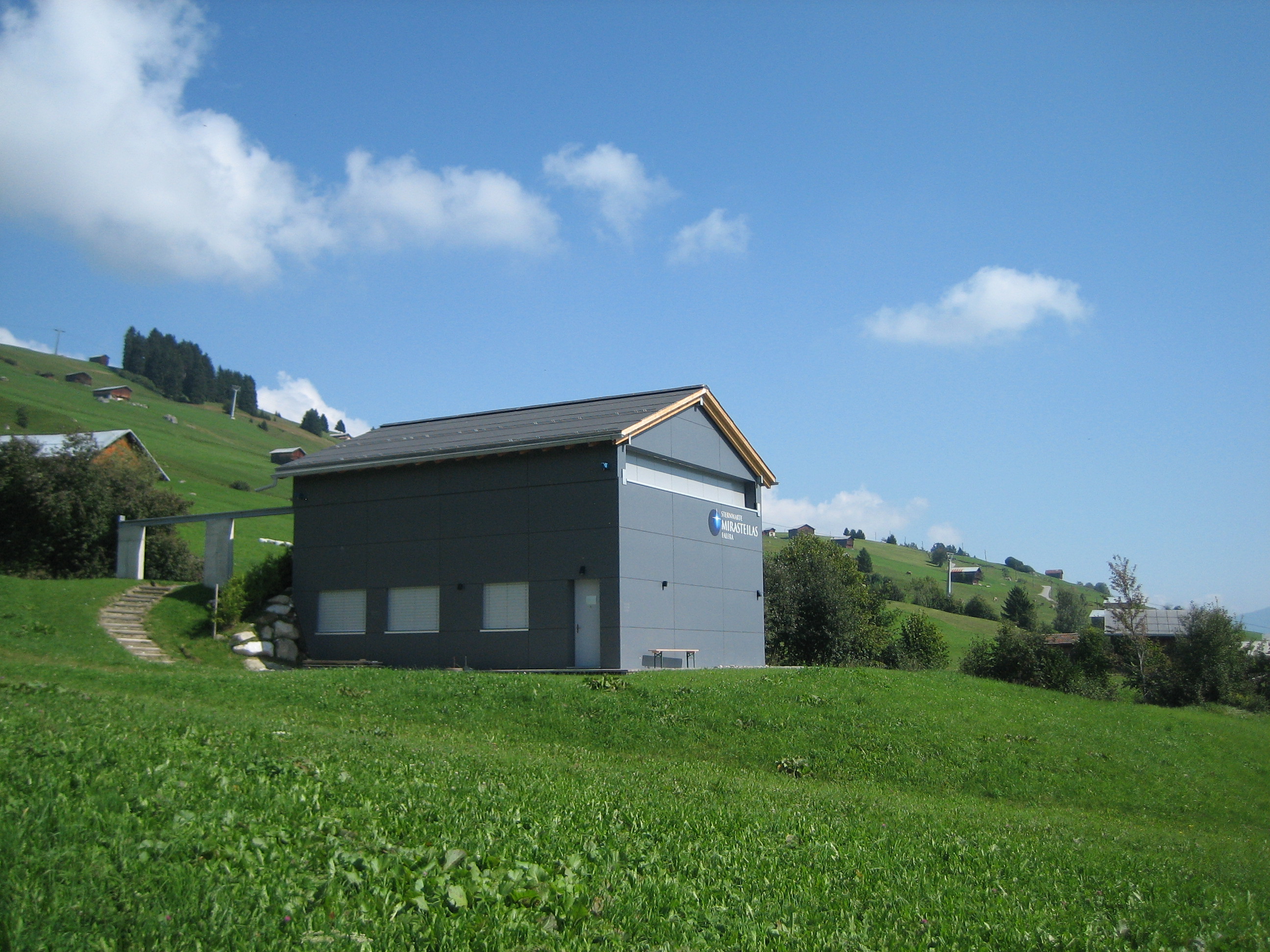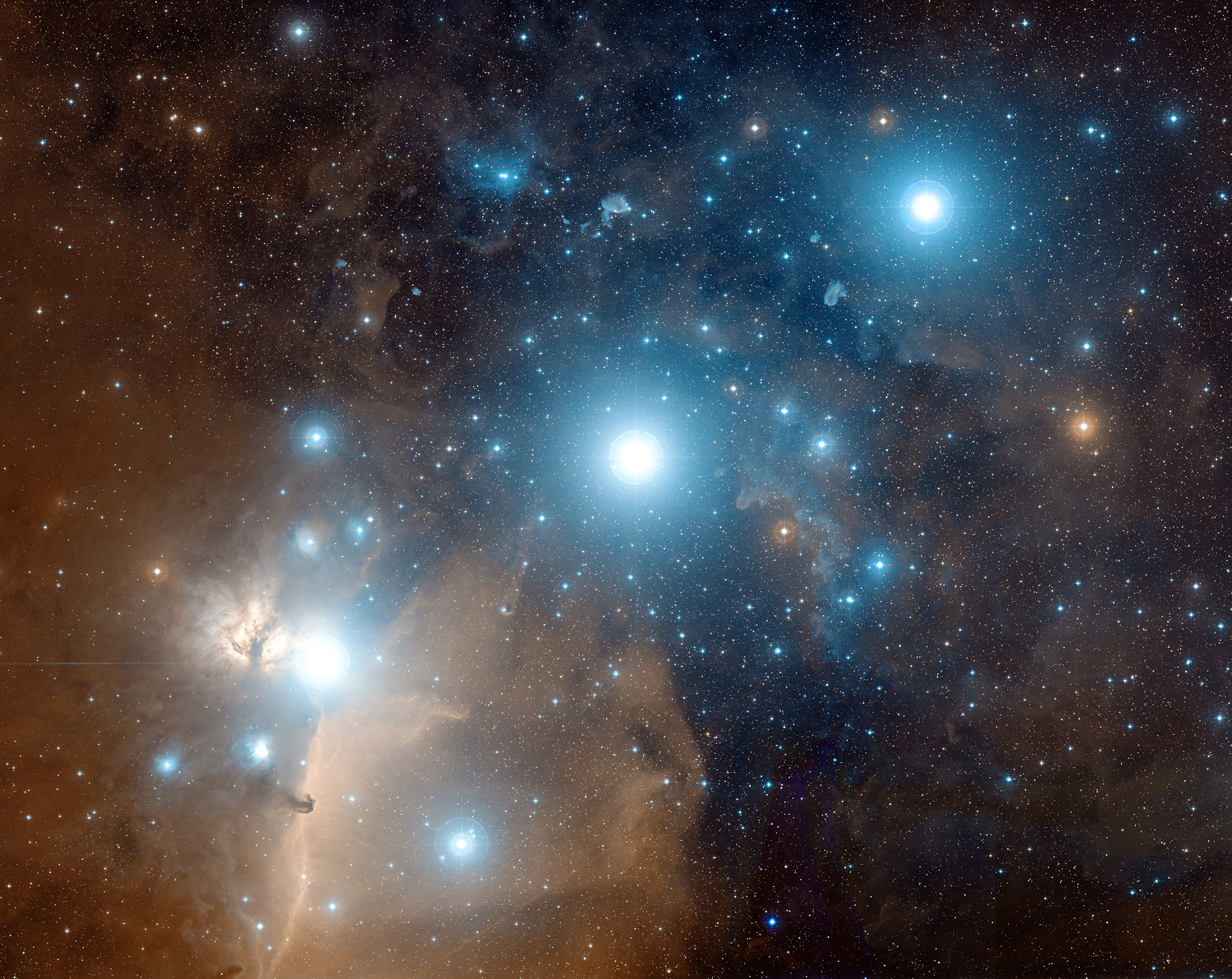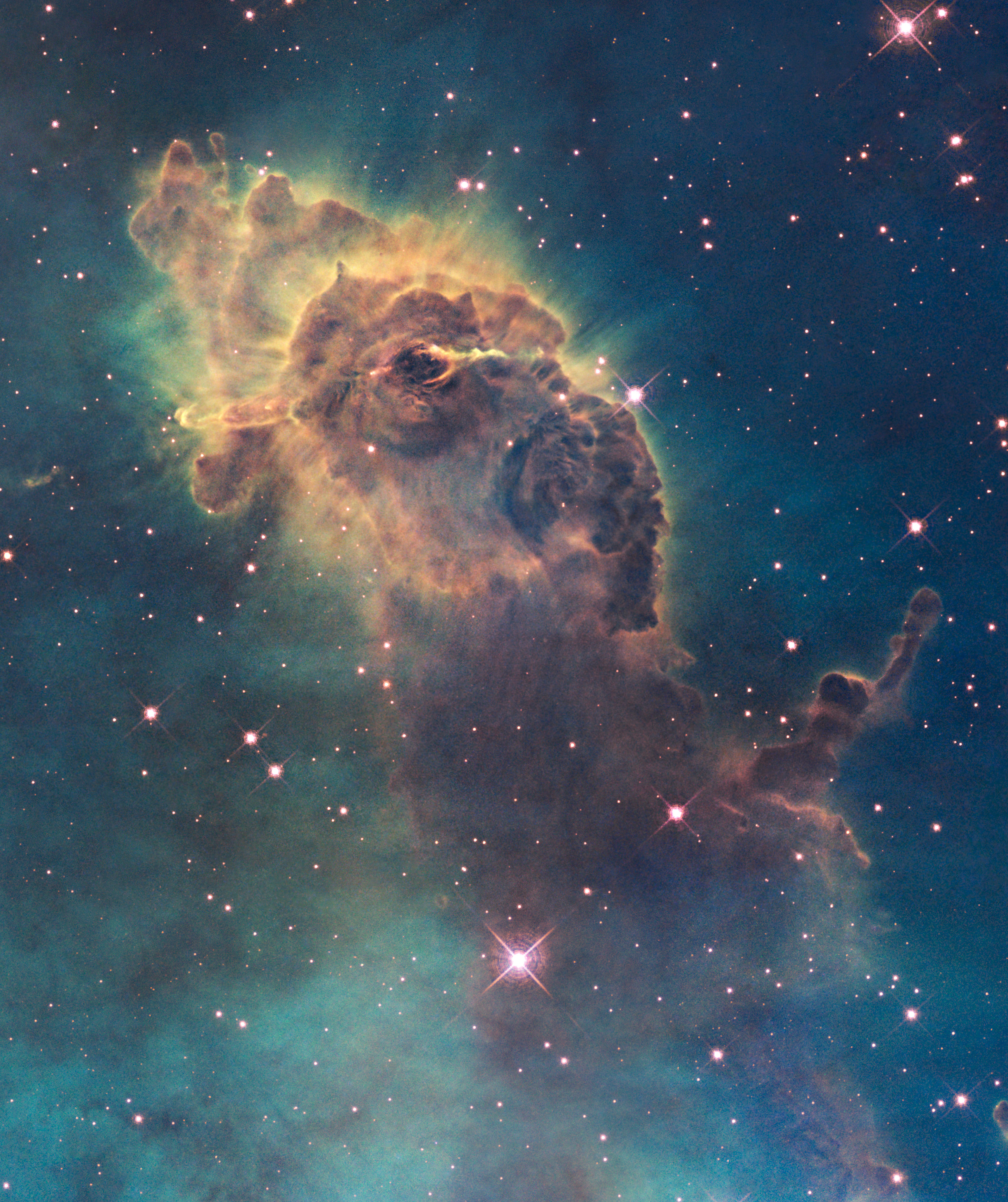|
Mirasteilas Observatory
The Mirasteilas Observatory (german: Sternwarte Mirasteilas; Romansh for "stargazer") is an astronomical observatory in Falera in the canton of Grisons in Switzerland. With its 90-centimeter telescope it is the largest publicly accessible observatory in Switzerland. History In 2001, the Portuguese-born local community member José De Queiroz, innkeeper in Falera and a member of the Astronomical Society of the Grisons (Graubünden), organized the first astronomy meeting in Falera. Owing to its easy accessibility, its elevated position on a terrace with a broad sky to the west, south, and east and low light pollution, the place offers ideal conditions for observing celestial bodies. During the next telescope meeting in Falera in 2002 the question was raised whether an observatory could be created here. The municipal council recognized that the construction of an observatory could be a big gain for the village, since no similar investment had been made in the Grisons by that ti ... [...More Info...] [...Related Items...] OR: [Wikipedia] [Google] [Baidu] |
Falera Mirasteilas
Falera is a Municipalities of Switzerland, municipality in the Surselva Region in the Switzerland, Swiss Cantons of Switzerland, canton of Graubünden. Falera is a part of the ''Alpenarena'' along with the towns of Flims and Laax and is the most secluded of the three. History Falera is a town of rich culture and history. In 1800 B.C., a settlement was started on the Mutta. This came during the Bronze Age and was very significant in the early development of what today is Switzerland. The village is first mentioned in 765 as ''Falariae''. While the first actual mention of a church in Falera was in 840-841. However, the current church was not built until 1491. The church was built on the foot of the Mutta and was named after St. Remigius. Around the church are stone pillars (megaliths or menhirs), arranged geometrically, that are said to date around 1500 B.C. Later, in the year 1903, another church was built. This church was built directly in the village and was named the Herz- ... [...More Info...] [...Related Items...] OR: [Wikipedia] [Google] [Baidu] |
Nasmyth Telescope
The Nasmyth telescope, also called Nasmyth–Cassegrain or Cassegrain–Nasmyth, is a reflecting telescope developed by the Scottish inventor James Nasmyth. It is a modified form of a Cassegrain telescope, with light reflected sideways to an eyepiece. Scheme As in the Cassegrain telescope, the light falls on a concave primary mirror, then is reflected towards a convex secondary mirror. A comparatively small tertiary flat mirror reflects the light to one of the sides of the telescope. (The central hole in the primary mirror may still host a Cassegrain focus if the tertiary can be moved out of the way.) This flat mirror is placed on the altitude axis, so that the beam exits through a hole in the middle of the altitude bearing. This means the eyepiece or instrument does not need to move up and down with the telescope as the tertiary mirror's angle with the main telescope axis is adjustable as a function of the telescope's pointing and the star's elevation above the horizon; therefor ... [...More Info...] [...Related Items...] OR: [Wikipedia] [Google] [Baidu] |
Asteroid
An asteroid is a minor planet of the Solar System#Inner solar system, inner Solar System. Sizes and shapes of asteroids vary significantly, ranging from 1-meter rocks to a dwarf planet almost 1000 km in diameter; they are rocky, metallic or icy bodies with no atmosphere. Of the roughly one million known asteroids the greatest number are located between the orbits of Mars and Jupiter, approximately 2 to 4 astronomical unit, AU from the Sun, in the main asteroid belt. Asteroids are generally classified to be of three types: C-type asteroid, C-type, M-type asteroid, M-type, and S-type asteroid, S-type. These were named after and are generally identified with carbonaceous, metallic, and silicaceous compositions, respectively. The size of asteroids varies greatly; the largest, Ceres (dwarf planet), Ceres, is almost across and qualifies as a dwarf planet. The total mass of all the asteroids combined is only 3% that of Earth's Moon. The majority of main belt asteroids follow slig ... [...More Info...] [...Related Items...] OR: [Wikipedia] [Google] [Baidu] |
Winterthur
, neighboring_municipalities = Brütten, Dinhard, Elsau, Hettlingen, Illnau-Effretikon, Kyburg, Lindau, Neftenbach, Oberembrach, Pfungen, Rickenbach, Schlatt, Seuzach, Wiesendangen, Zell , twintowns = Hall in Tirol (Austria), La Chaux-de-Fonds (Switzerland), Pilsen (Czech Republic), Yverdon-les-Bains (Switzerland) , website = stadt.winterthur.ch Winterthur (; french: Winterthour, lang) is a city in the canton of Zürich in northern Switzerland. With over 110,000 residents it is the country's sixth-largest city by population, and is the ninth-largest agglomeration with about 140,000 inhabitants. Located about northeast of Zürich, Winterthur is a service and high-tech industrial satellite city within Greater Zürich. The official language of Winterthur is German,The official language in any municipality in German-speaking Switzerland is always German. In this context, the term 'German' is used as an umbrella term for any variety of Germ ... [...More Info...] [...Related Items...] OR: [Wikipedia] [Google] [Baidu] |
Astrograph
An astrograph (or astrographic camera) is a telescope designed for the sole purpose of astrophotography. Astrographs are mostly used in wide-field astronomical surveys of the sky and for detection of objects such as asteroids, meteors, and comets. Improvements in photography in the middle 19th century led to designs dedicated to astrophotography, and they were also popular in the 20th century. As in other photography, chemicals were used that respond to light, recorded on a glass photographic plate or sometimes on photographic film. Many observatories of this period used an astrograph, beside instruments like the transit telescope, great refractors, and chronometers, or instruments for observing the Sun. Astrographs were often used to make surveys of the night sky, and one of the famous projects was Carte du Ciel. Discoveries using an astrograph include then-planet Pluto. Rather than looking through the telescope, it was discovered by using a blink comparator with image ... [...More Info...] [...Related Items...] OR: [Wikipedia] [Google] [Baidu] |
Astrophotography
Astrophotography, also known as astronomical imaging, is the photography or imaging of astronomical objects, celestial events, or areas of the night sky. The first photograph of an astronomical object (the Moon) was taken in 1840, but it was not until the late 19th century that advances in technology allowed for detailed stellar photography. Besides being able to record the details of extended objects such as the Moon, Sun, and planets, modern astrophotography has the ability to image objects invisible to the human eye such as dim stars, nebulae, and galaxies. This is done by long time exposure since both film and digital cameras can accumulate and sum photons over these long periods of time. Photography using extended exposure-times revolutionized the field of professional astronomical research, recording hundreds of thousands of new stars, and nebulae invisible to the human eye. Specialized and ever-larger optical telescopes were constructed as essentially big cameras ... [...More Info...] [...Related Items...] OR: [Wikipedia] [Google] [Baidu] |
Binoculars
Binoculars or field glasses are two refracting telescopes mounted side-by-side and aligned to point in the same direction, allowing the viewer to use both eyes ( binocular vision) when viewing distant objects. Most binoculars are sized to be held using both hands, although sizes vary widely from opera glasses to large pedestal-mounted military models. Unlike a ( monocular) telescope, binoculars give users a three-dimensional image: each eyepiece presents a slightly different image to each of the viewer's eyes and the parallax allows the visual cortex to generate an impression of depth. Optical designs Galilean Almost from the invention of the telescope in the 17th century the advantages of mounting two of them side by side for binocular vision seems to have been explored. Most early binoculars used Galilean optics; that is, they used a convex objective and a concave eyepiece lens. The Galilean design has the advantage of presenting an erect image but has a narr ... [...More Info...] [...Related Items...] OR: [Wikipedia] [Google] [Baidu] |
Star Cluster
Star clusters are large groups of stars. Two main types of star clusters can be distinguished: globular clusters are tight groups of ten thousand to millions of old stars which are gravitationally bound, while open clusters are more loosely clustered groups of stars, generally containing fewer than a few hundred members, and are often very young. Open clusters become disrupted over time by the gravitational influence of giant molecular clouds as they move through the galaxy, but cluster members will continue to move in broadly the same direction through space even though they are no longer gravitationally bound; they are then known as a stellar association, sometimes also referred to as a ''moving group''. Star clusters visible to the naked eye include the Pleiades, Hyades, and 47 Tucanae. Open cluster Open clusters are very different from globular clusters. Unlike the spherically distributed globulars, they are confined to the galactic plane, and are almost always found w ... [...More Info...] [...Related Items...] OR: [Wikipedia] [Google] [Baidu] |
Galaxy
A galaxy is a system of stars, stellar remnants, interstellar gas, dust, dark matter, bound together by gravity. The word is derived from the Greek ' (), literally 'milky', a reference to the Milky Way galaxy that contains the Solar System. Galaxies, averaging an estimated 100 million stars, range in size from dwarfs with less than a hundred million stars, to the largest galaxies known – supergiants with one hundred trillion stars, each orbiting its galaxy's center of mass. Most of the mass in a typical galaxy is in the form of dark matter, with only a few percent of that mass visible in the form of stars and nebulae. Supermassive black holes are a common feature at the centres of galaxies. Galaxies are categorized according to their visual morphology as elliptical, spiral, or irregular. Many are thought to have supermassive black holes at their centers. The Milky Way's central black hole, known as Sagittarius A*, has a mass four million times greater than ... [...More Info...] [...Related Items...] OR: [Wikipedia] [Google] [Baidu] |
Nebula
A nebula ('cloud' or 'fog' in Latin; pl. nebulae, nebulæ or nebulas) is a distinct luminescent part of interstellar medium, which can consist of ionized, neutral or molecular hydrogen and also cosmic dust. Nebulae are often star-forming regions, such as in the " Pillars of Creation" in the Eagle Nebula. In these regions, the formations of gas, dust, and other materials "clump" together to form denser regions, which attract further matter, and eventually will become dense enough to form stars. The remaining material is then thought to form planets and other planetary system objects. Most nebulae are of vast size; some are hundreds of light-years in diameter. A nebula that is visible to the human eye from Earth would appear larger, but no brighter, from close by. The Orion Nebula, the brightest nebula in the sky and occupying an area twice the angular diameter of the full Moon, can be viewed with the naked eye but was missed by early astronomers. Although denser than the spac ... [...More Info...] [...Related Items...] OR: [Wikipedia] [Google] [Baidu] |
Refracting Telescope
A refracting telescope (also called a refractor) is a type of optical telescope that uses a lens as its objective to form an image (also referred to a dioptric telescope). The refracting telescope design was originally used in spyglasses and astronomical telescopes but is also used for long-focus camera lenses. Although large refracting telescopes were very popular in the second half of the 19th century, for most research purposes, the refracting telescope has been superseded by the reflecting telescope, which allows larger apertures. A refractor's magnification is calculated by dividing the focal length of the objective lens by that of the eyepiece. Refracting telescopes typically have a lens at the front, then a long tube, then an eyepiece or instrumentation at the rear, where the telescope view comes to focus. Originally, telescopes had an objective of one element, but a century later, two and even three element lenses were made. Refracting telescope is a technolog ... [...More Info...] [...Related Items...] OR: [Wikipedia] [Google] [Baidu] |









